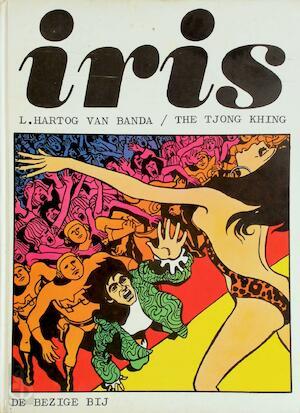Iris: A Novel for the Eye
Thé Tjong-Khing’s Iris, a 'Novel for the Eye' marked the peak of his career as a cartoonist. He and scriptwriter Lo Hartog van Banda were looking for a way to reach the hearts of the socially motivated young people of the late 1960s, who were growing up with comic strips and television. Khing’s drawings are therefore more dominant than Hartog van Banda’s texts.

The characters’ emotions in this graphic novel drive the compelling, dystopian story. The young woman Iris has set her heart on a career as a singer, and, despite boyfriend Mark’s warnings, allows herself to be seduced by the capitalist producer, ‘dream lover M.G.’. He moulds her into a megastar, which leaves Mark and the rest of his lot having to make do with the merchandise: life-sized (sex) dolls of Iris. Attempts to rescue Iris come to nothing; all they do is to allow the dream lover to go on playing his games.
Khing’s style in Iris shows some affinity with his contemporary, the late Flemish illustrator Guy Peellaert, and the whiff of eroticism which surrounds Iris is somewhat reminiscent of Barbarella, her contemporary French heroine.
Iris, drawn with virtuoso élan, is the earliest graphic novel produced in the Netherlands. Hartog van Banda and Thé Tjong-Khing could be said to have discovered the genre all by themselves.